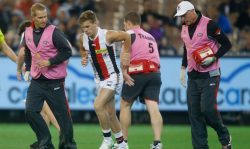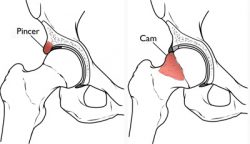Hip therapy with Andrew Wallis.
Published on
22 Aug 2016

Call us on: (03) 9975 4133
July's professional development session was all about the hips at Pure Physio. Liz Edlin shares her insights on treatment options and recovery.
Continuing professional development.
The team at Pure Physio get together once a month to partake in CPD – Continuing Professional Development. It’s an opportunity to share knowledge with our colleagues and learn from some of Melbourne’s best health specialists.
Keeping up to date with the latest in assessment, consultation and support lets us continue delivering dynamic and clinically relevant treatments for our clients.
The diagnosis is in.
This month’s CPD session honed in on the hips in consultation with Andrew Wallis. Andrew specialises in hip and groin injuries as head physiotherapist at St. Kilda Football Club.
Femoroacetabular Impingement (FAI) is the fashionable diagnosis to have this decade, especially in multidirectional kicking sports such as AFL and soccer.
Research suggests that in growing adolescents – particularly those that play sport – the body forms extra bone as the hips develop. This is the body’s way of protecting growing bones. However, in some cases this extra bone can lead to pain and dysfunction.
Treating FAI.
Many people diagnosed with FAI are told that a hip arthroscopy (in order to remove the extra bone) is the answer. However, surgery is not the only option for treatment.
We discussed post-operative rehabilitation protocols, as well as the evidence for non-surgical treatment – with a particular focus on physiotherapy.
Andrew shared his key diagnostic assessment and treatment recommendations. They included simple exercises that we used to test our own hip muscle control.
So what did we learn?
Patients are often treated with surgery first and physio later. It’s important to note that in many cases, physiotherapy is a viable non-surgical solution in the treatment of FAI.
The jury is still out on the optimal FAI post-operative protocol; but most surgeons agree that physiotherapy to retrain muscles around the hip is essential before a graded return to sport.
While the road to recovery may be long, correcting the movement dysfunction and stabilising muscles around the hip is paramount in addressing hip pain.
The session was a fantastic way to learn from a leading hip specialist, and get a patient’s perspective on the rigours of hip treatment and pain management.
With some practical exercises and treatment simulations, this month’s CPD was very much hands-on hips. While physiotherapists are always good at suggesting rehabilitative exercises, it’s important to practice what we preach and give them a try every now and then!
If you’re experiencing any pain in the hips, or you’d like assessment or recommendations for improved physical performance on the football field, get in touch with the team to see how we can help.




